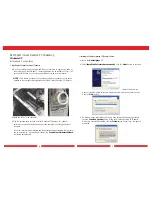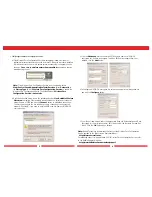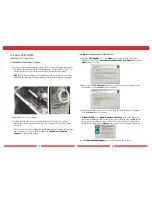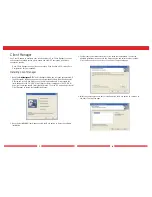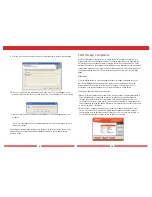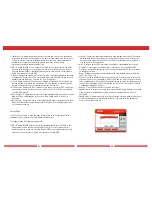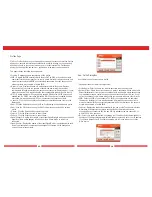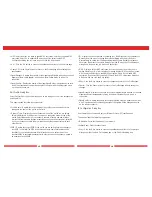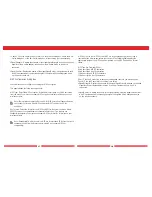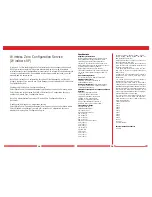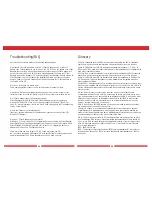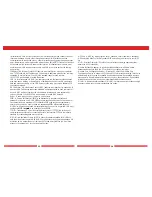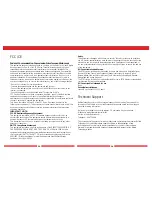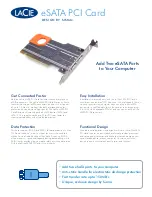
23
24
Infrastructure Mode—Networks that function in infrastructure mode consist of devices
that communicate with each other through an access point.Wireless devices can
communicate with wired networks or other wireless devices by going through an access
point. Infrastructure mode is also called a Basic Service Set (BSS), if it consists of wireless
devices and a wired network. Networks that function in infrastructure mode are most
useful when a WLAN requires access to a wired LAN for services such as file sharing
and printing.
IP Address—An Internet Protocol (IP) address is an identifier for a device or computer
on a TCP/IP network.An IP address is a 32-bit numeric address written as four numbers
separated by decimal points. 0 to 255 is the available range for each number.
1.225.37.123 is an example of a valid IP address.
LAN—A local-area network (LAN) is a computer network that spans a relatively small
area, such as one building or a small group of buildings. Each node in a LAN can access
data and devices anywhere on the LAN. However, each node must have a separate CPU
to execute programs.
MAC Address—A Media Access Control (MAC) address is an identifier for each node of
a network. MAC addresses are unique hardware numbers assigned to each computer or
device.A MAC address consists of twelve numbers written as six pairs separated by
colons or dashes. 11:22:33:44:55:66 is an example of a valid MAC address.
Node—A node is any device or computer on a network.
SSID—A Service Set Identifier (SSID) is an alphanumeric identifier that acts as a
password for devices on a WLAN. SSIDs are case-sensitive and consist of a minimum of
two characters and a maximum of 32 characters. SSIDs can function as rudimentary
security and can also be used for network segmenting. SSIDs differentiate between
WLANs, so all access points and devices attempting to connect to a specific WLAN must
use identical SSIDs.
myssid is an example of a valid SSID.
TCP/IP—Transmission Control Protocol/Internet Protocol (TCP/IP) is a collection of
communications protocols for connecting hosts to the Internet.TCP/IP is the industry
standard for transmitting data over networks.
WEP—Wired Equivalent Privacy (WEP) is a security measure available for WLANs to
help them be as secure as wired LANs.WEP provides security by encrypting data so it is
protected as it is transmitted over radio waves.To read encrypted files you must have
access to the password, or key, that decrypts the files.
WEP key—A WEP key is a decryption key, or password, that is required to access any
WEP-encrypted data.To effectively enable WEP encryption, you must enter your WEP
key.
Wi-Fi—Wireless Fidelity (Wi-Fi) refers to any wireless networking equipment that
adheres to 802.11 standards.
Wireless Notebook Adapter—A wireless notebook adapter is a 32-bit wireless
connection device that fits in the PC card slot of a notebook computer.
Wireless Zero Configuration Service—Windows XP offers the Wireless Zero
Configuration Service to support 802.11b and 802.11g wireless networking.This service
automatically polls the area for available wireless access points. If an available wireless
access point is found,Windows attempts to connect to the access point. If no available
wireless access points are found, you must manually add the access points.
WLAN—A wireless local-area network (WLAN) is a local-area network that uses high-
frequency radio waves to communicate between nodes.


